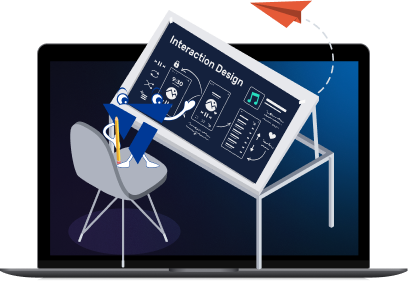Elevate Your Business With Cutting-Edge Software Development
Unlock the full potential of your business with custom software designed to streamline processes, enhance user experience, and drive growth.
Unlock the full potential of your business with custom software designed to streamline processes, enhance user experience, and drive growth.







Discover Your Needs For Free
We dive deep into understanding your idea, offering expert insights to refine and perfect it.
360° Software Development
We handle every aspect of software creation, from initial design and development to final deployment.
Enhance & Scale It
We don't just deliver your product and walk away. We offer ongoing support to enhance and evolve the product based on user feedback, market and business changes.
Explore our range of software development services
Offering expert guidance to turn your software ideas into actionable strategies and successful projects.

We craft visually compelling designs and strong brand identities that resonate with your audience, ensuring your products stand out and connect effectively.

Working with Vitec means accessing cutting-edge technology, leveraging decades of expertise in product development & launches, and benefiting from customized IT Solutions tailored to unlock your company’s full potential.
Get a quote Discover Your Needs
Discover Your Needs
Understand your goals, ideas and the challenges of your industry, ensuring we fully understand what matters.
 Craft Comprehensive Concepts
Craft Comprehensive Concepts
With decades of product development knowledge, we craft solid, future-ready concepts built for your success.
 Create Engaging Product Designs
Create Engaging Product Designs
We create intuitive, visually unique designs that engage with users and enhance product experiences.
 Build Complete Solutions
Build Complete Solutions
We develop intuitive front-ends, powerful back-ends, and reliable architectures to bring your concept to life.
 Launching Your Product
Launching Your Product
We ensure a secure deployment, analyze market fit, and make iterative improvements to maximize product performance.
 Drive Success Together
Drive Success Together
As your digital “CTO,” we go beyond maintenance to continually improve and scale your product, ensuring its long-term success.
Ideas that where turned to proven results
Redesign of the ERP flagship system for App-Room GmbH, the #1 ERP solution for the bicycle industry in Switzerland.
This design transformation increased user-experience and engagement by 30% and reduced the effort for customer support across Europe through a smart and self-explanatory UI/UX.
Die Friedliche Geburt is Germany's #1 birth preparation App for pregnant women.
We redesigned the entire journey for “Die Friedliche Geburt”, giving users access to online courses, meditations, podcasts and hypnosis with downloadable content for offline use anywhere.
The relaunch helped the product become the #1 leading birth preparation online course in DACH.
We digitized the #1 children's wrestling league in the US, transforming how events are managed for employees and customers alike. By streamlining athlete management, event coordination, and registration processes, we significantly reduced staff workload.
At the same time, our solutions increased customer engagement and loyalty by 40%, providing a seamless experience for tracking results and registering for future events.
Unico Swiss is a Swiss manufacturer of premium outdoor furniture and handcrafted fire bowls.
With growing demand and a vision for global expansion, Unico Swiss needed a new e-commerce solution that not only replaced the old shop but also streamlined integration with ERP and CRM systems, while laying the foundation for international growth.
We completely rebuilt the shop by switching to Shopify. This allowed us to create a faster and more scalable solution that leaves the old structure behind and is ready for scale.